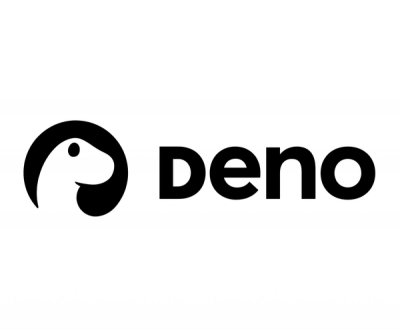
Security News
Deno 2.2 Improves Dependency Management and Expands Node.js Compatibility
Deno 2.2 enhances Node.js compatibility, improves dependency management, adds OpenTelemetry support, and expands linting and task automation for developers.

TIFY is a slim and mobile-friendly IIIF document viewer built with Vue.js. It supports IIIF Presentation API and Image API version 2 and 3.
Continue reading to learn how to integrate TIFY into your website or application and about its options and API, check out the website for usage examples, or have a look at the user guide.
TIFY is available as an npm package:
npm install tify
Embed TIFY into your website in three easy steps:
Include both the JavaScript and the stylesheet.
Either download TIFY and copy the contents of the dist directory to your server:
<script src="tify.js?v0.31.0"></script>
<link rel="stylesheet" href="tify.css?v0.31.0">
To avoid issues with browser caching, add a query parameter with the current version, e.g.
?v0.31.0.
Or use jsDelivr:
<script src="https://cdn.jsdelivr.net/npm/tify@0.31.0/dist/tify.js"></script>
<link rel="stylesheet" href="https://cdn.jsdelivr.net/npm/tify@0.31.0/dist/tify.css">
Or import TIFY into your web application:
import 'tify'
import 'tify/dist/tify.css'
Add an HTML block element with an id and set its height.
<div id="tify" style="height: 640px"></div>
Create a TIFY instance.
<script>
new Tify({
container: '#tify',
manifestUrl: 'https://example.org/iiif-manifest.json',
})
</script>
Many aspects of the theme can be modified with SCSS variables or CSS custom properties, allowing you to easily adapt TIFY’s appearance to your website. See the theme settings file for all available variables.
If you are are upgrading from any previous version, have a look at the upgrading guidelines.
TIFY takes an options object as its only parameter. While optional, you usually want to set container and manifestUrl.
childManifestAutoloaded: boolean, default true
If the manifest set by manifestUrl is a collection (@type is sc:Collection) and childManifestUrl is not set, automatically load the first manifest in the collection. This only works for collections with manifests on the first level; when the collection only contains other collections and childManifestUrl is not set, only the collection view is shown until the user selects a child manifest to load.
childManifestUrl: string or null (default)
If the manifest set by manifestUrl is a collection (@type is sc:Collection), additionally load another IIIF manifest, whose @type must be sc:Manifest. Note that TIFY does not check if this additional manifest is actually part of the collection.
container: string or HTMLElement or null (default)
The HTML element into which TIFY is mounted. If set to null, TIFY is not mounted at all until mount is called (see API).
fallbackLanguage: string, default 'en'
The language to be used for strings from the IIIF manifest that are not available in the current language. If no value matches language or fallbackLanguage, the first available language is displayed.
filters: object, default {}
Sets the initial image filters. Available properties are 'brightness', 'contrast' (both a floating-point number between 0.5 and 2) and 'saturation' (floating-point number between 0 and 3), all optional.
language: string, default 'en'
The interface language, matching the translation filename without extension. See which translations are available or add your own.
manifestUrl: string or null (default)
The URL of the IIIF manifest to load.
optionsResetOnPageChange: array of strings, default ['pan']
Viewer options that are reset on page change. Allowed array values are 'filters', 'pan', 'rotation' and 'zoom'.
pageLabelFormat: string, default 'P : L'
Defines how page labels are displayed in the page selector and in the thumbnails view. The placeholder P is replaced by the physical page number (consecutive numbers starting at 1) while L is replaced by the logical page label, which can be any string, defined by the manifest.
pages: array of 1-based integers or null (default)
The page(s) to display initially. If null, the initial page is determined by the manifest’s startCanvas, and if that is not set either, the first page is displayed. Page numbers start at 1.
pan: object, default {}
Sets the initial pan. The object has two optional properties x and y, both floating-point numbers. The higher the value, the more to the left respectively top the image is positioned. By default, the image is centered within the container.
translationsDirUrl: string or null (default)
The URL of the directory where TIFY finds its translations, without trailing /. If not set, TIFY tries to determine this URL automatically from its <script> element, but this may not work depending on how TIFY is loaded.
urlQueryKey: string or null (default), only use characters A…Z a…z 0…9 - _
If set, parameters are read from the URL query and any changes are reflected, using the key provided. This works with multiple concurrent instances, but each instance must use a unique key. Note that when urlQueryKey is set, all options defined by urlQueryParams can be overridden by changing the URL in the browser’s address bar.
urlQueryParams: array of strings, default ['childManifestUrl', 'filters', 'pages', 'pan', 'rotation', 'view', 'zoom']
The parameter keys to be read from and stored in the URL query. Only has effect if urlQueryKey is set, in which case parameters read from the URL override options of the same name.
view: string, default ''
The initially displayed view (panel); scan, fulltext, thumbnails, toc, info, help, or empty (same as scan). On large screens, the scan is always shown next to the selected view.
viewer: object
An object with options for OpenSeadragon, TIFY’s image rendering component. See its documentation for all available options.
zoom: floating-point number, default null
Sets the initial zoom level. The higher the number, the deeper the zoom. By default, zoom is set automatically so that the full image is visible.
An example with most available options set to non-default values:
new Tify({
container: '#tify',
language: 'de',
manifestUrl: 'https://example.org/iiif-manifest.json',
pageLabelFormat: 'P (L)',
pages: [2, 3],
pan: { x: .45, y: .6 },
translationsDirUrl: '/translations/tify',
urlQueryKey: 'tify',
urlQueryParams: ['pages'],
view: '',
viewer: {
immediateRender: false,
},
zoom: 1.2,
})
With the exception of mount and destroy, all API functions are only available after TIFY has been mounted and the manifest has been loaded. Then the ready promise is fulfilled. There is no API function to load a new manifest; just replace the instance.
Use the API like this:
const tify = new Tify({ manifestUrl: 'https://example.org/iiif-manifest.json' })
tify.mount('#tify')
tify.ready.then(() => {
tify.setPage([1, 12, 13])
tify.setView('thumbnails')
tify.viewer.viewport.zoomTo(2)
})
destroy
Destroys the current instance and removes event listeners. If you are using TIFY in an SPA, this should be called every time a page containing TIFY is unmounted to avoid memory leaks.
No parameters.
mount
Mounts TIFY.
Parameters:
container: string or HTMLElement, required
CSS selector pointing to a single HTML node or the node itself into which TIFY is mounted.
resetScan
Resets the scan display options.
Parameters:
includingFiltersAndRotation: boolean, default false
By default, only pan and zoom are reset. If true, image filters and rotation are reset, too.
setPage
Changes the active page or pages.
Parameters:
pageOrPages: 1-based integer or array thereof (required)
Provide a number to display a single page or an array of numbers to display multiple pages at once. If the number (or any of the numbers in the array) is smaller than 1 or greater than the number of pages in the document, the command is ignored.
Returns an array of the current pages or false if pageOrPages is invalid.
setLanguage
Changes the frontend language and loads the associated translation. This function returns a Promise.
Parameters:
language: string, default 'en'
The language to load. A JSON file containing the translations for this language must be present in public/translations. Untranslated strings are displayed in English.
setView
Changes the active view (panel).
Parameters:
name: string (required)
The view’s name; 'export', 'fulltext', 'help', 'info', 'scan', 'thumbnails', 'toc', or an empty string (same as 'scan').
toggleDoublePage
Switches from single to double page (“book view”) and vice versa.
Parameters:
forced: boolean, default false
Double page is forced on (true) or off (false).
toggleFullscreen
Toggles fullscreen mode. For security reasons, most browsers require a user interaction to enter fullscreen mode; a button calling this function via onclick works, but trying to do so automatically does probably not.
Parameters:
forced: boolean, default false
Fullscreen is forced on (true) or off (false).
The viewer object exposes the full OpenSeadragon API. If you want to control the scan view programmatically, the methods of viewer.viewport are probably of interest.
You need to have Node.js v18.0 or above, npm (usually comes with Node.js) and git installed.
Install dependencies:
npm install
Run in development mode with hot reload and automatic linting:
npm run dev
Build for production with minification:
npm run build
The production build will be stored in dist.
Run unit tests: npm run test:unit
Run end-to-end tests:
npm run devnpm run build && npm run test:e2e
FAQs
A slim and mobile-friendly IIIF document viewer
The npm package tify receives a total of 121 weekly downloads. As such, tify popularity was classified as not popular.
We found that tify demonstrated a healthy version release cadence and project activity because the last version was released less than a year ago. It has 0 open source maintainers collaborating on the project.
Did you know?

Socket for GitHub automatically highlights issues in each pull request and monitors the health of all your open source dependencies. Discover the contents of your packages and block harmful activity before you install or update your dependencies.

Security News
Deno 2.2 enhances Node.js compatibility, improves dependency management, adds OpenTelemetry support, and expands linting and task automation for developers.

Security News
React's CRA deprecation announcement sparked community criticism over framework recommendations, leading to quick updates acknowledging build tools like Vite as valid alternatives.

Security News
Ransomware payment rates hit an all-time low in 2024 as law enforcement crackdowns, stronger defenses, and shifting policies make attacks riskier and less profitable.